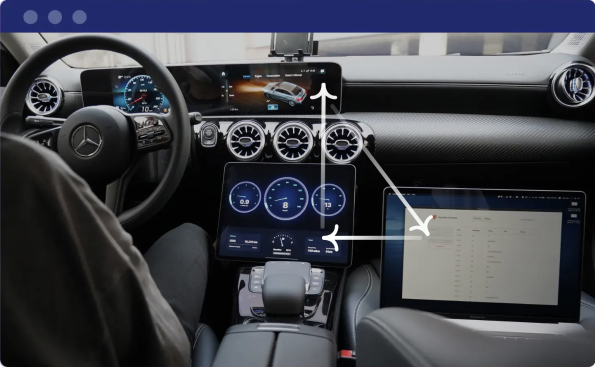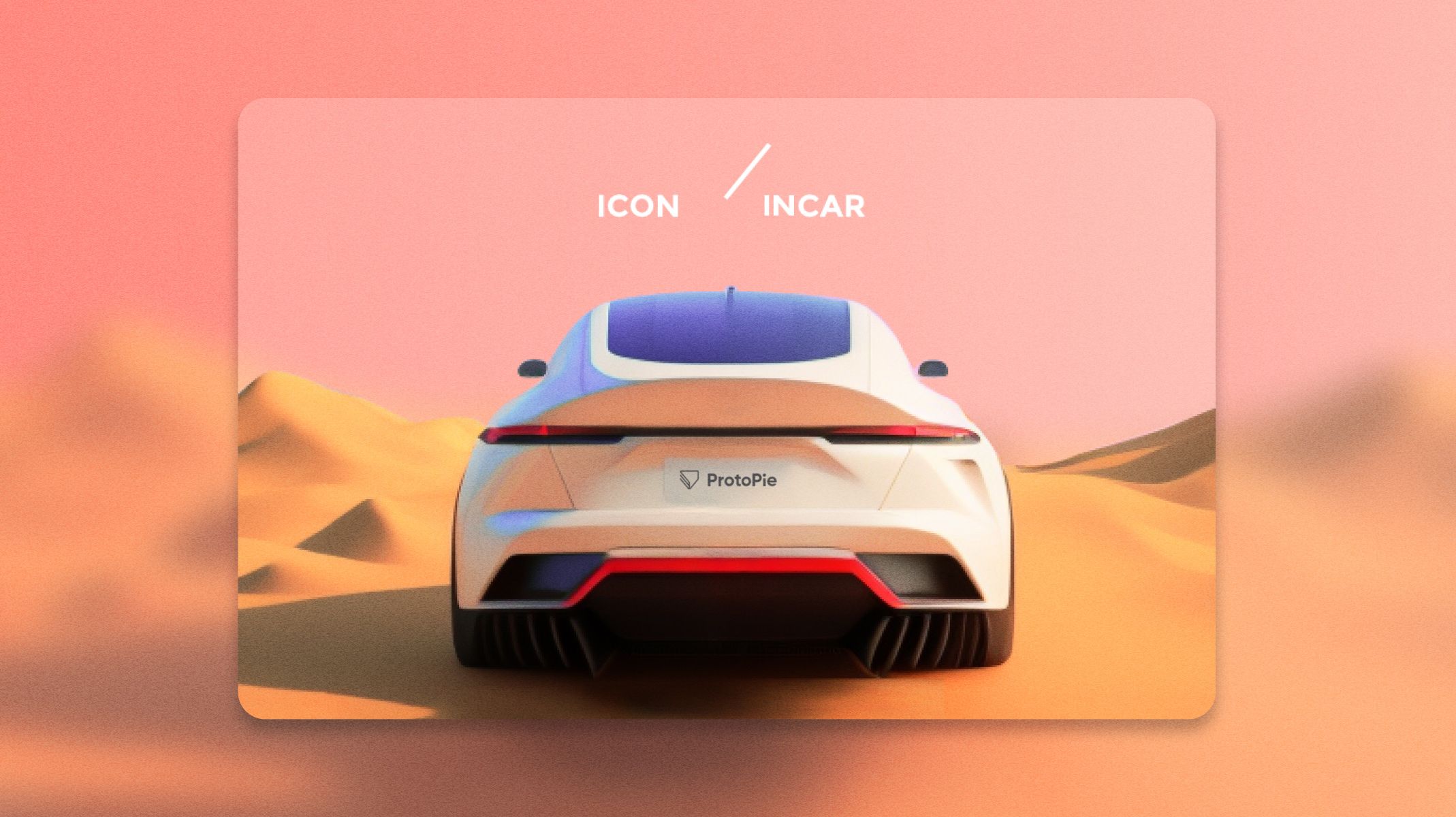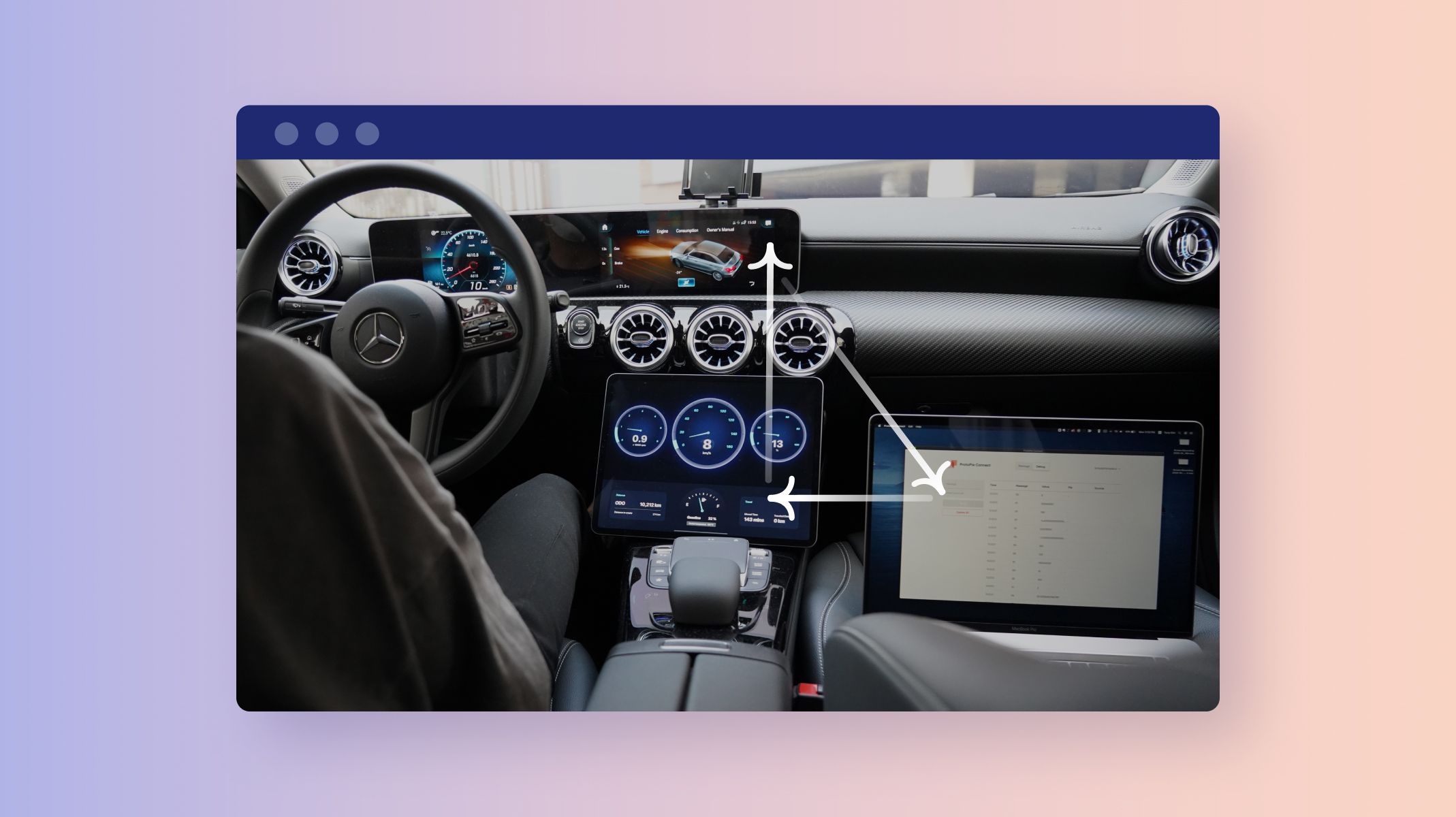Challenging the Status Quo in Automotive Prototyping
Find out how RemotiveLabs can be used with ProtoPie to build automotive prototypes in a fun and efficient way.

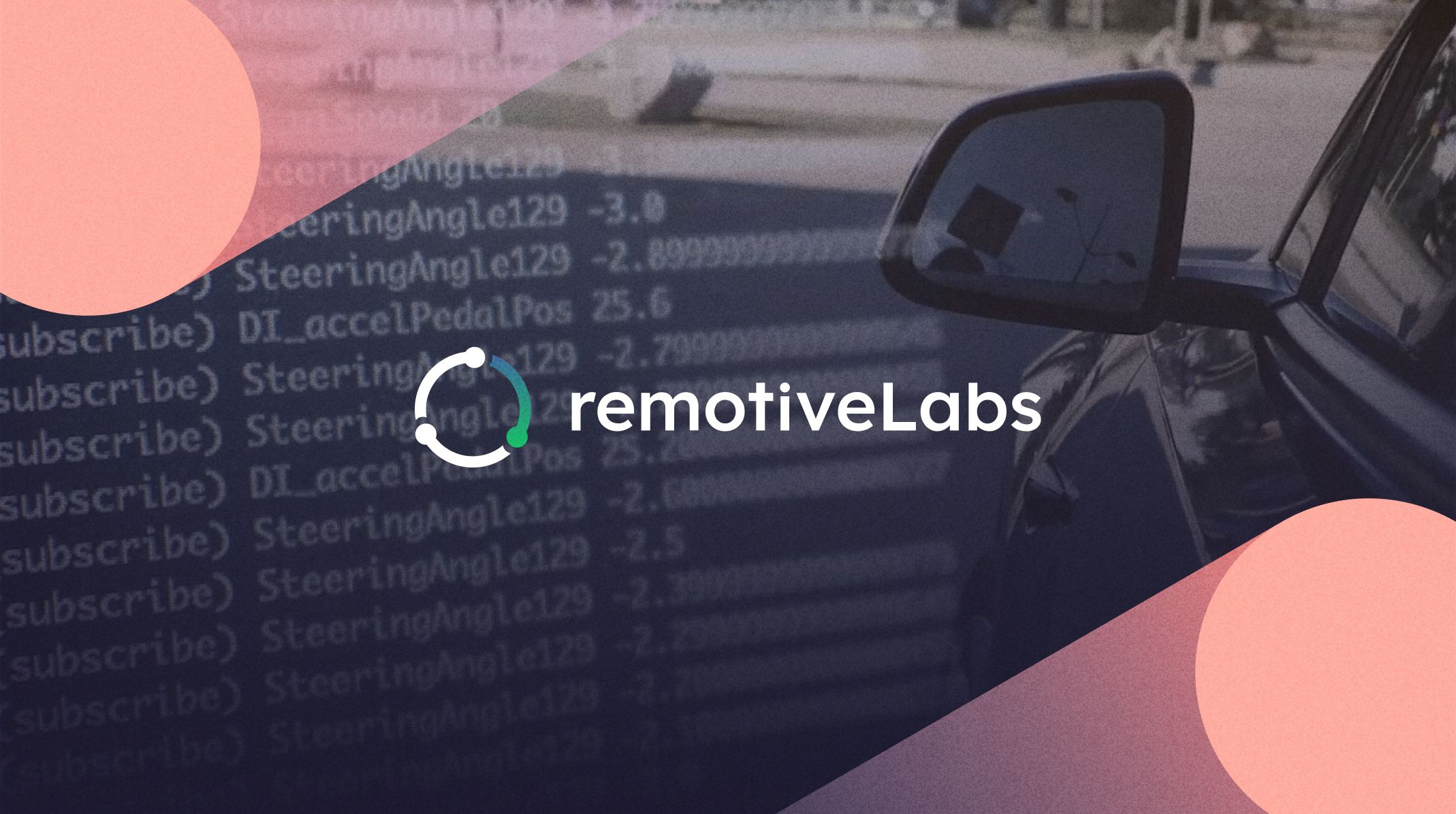
As a developer prototyping automotive applications, you've probably had your fair share of problems. Reliance on hardware that you can’t access. Even more inaccessible sensor data. Delayed testing. Not to mention the outdated tools and processes that can’t keep up with the increasingly complex hardware nor offering the ability to write the code in modern programming languages.
None of this is ideal when you need to iterate, test, and get feedback on your ideas quickly—without sacrificing quality or safety.
That’s where RemotiveLabs comes in. RemotiveLabs develops an automotive software platform designed to reduce complexity in vehicle software development processes. With a solution made for developers by developers, the Swedish company challenges the status quo in how software is built in the automotive industry.

And ProtoPie was instrumental in getting them there. Let’s find out how.
How RemotiveLabs revolutionizes the automotive industry
RemotiveLabs is leading the way toward software-led development in the automotive industry. But what does RemotiveLabs do, and what is so special about it?
RemotiveLabs adds value throughout the software development process and the automotive UX design process in four key ways:
1. Removing hardware dependency
Most automotive prototypes need physical access to the car and its components, which makes it harder to test and iterate.
On the RemotiveLabs platform, you can play and visualize recorded signal data without ever setting foot in the vehicle.
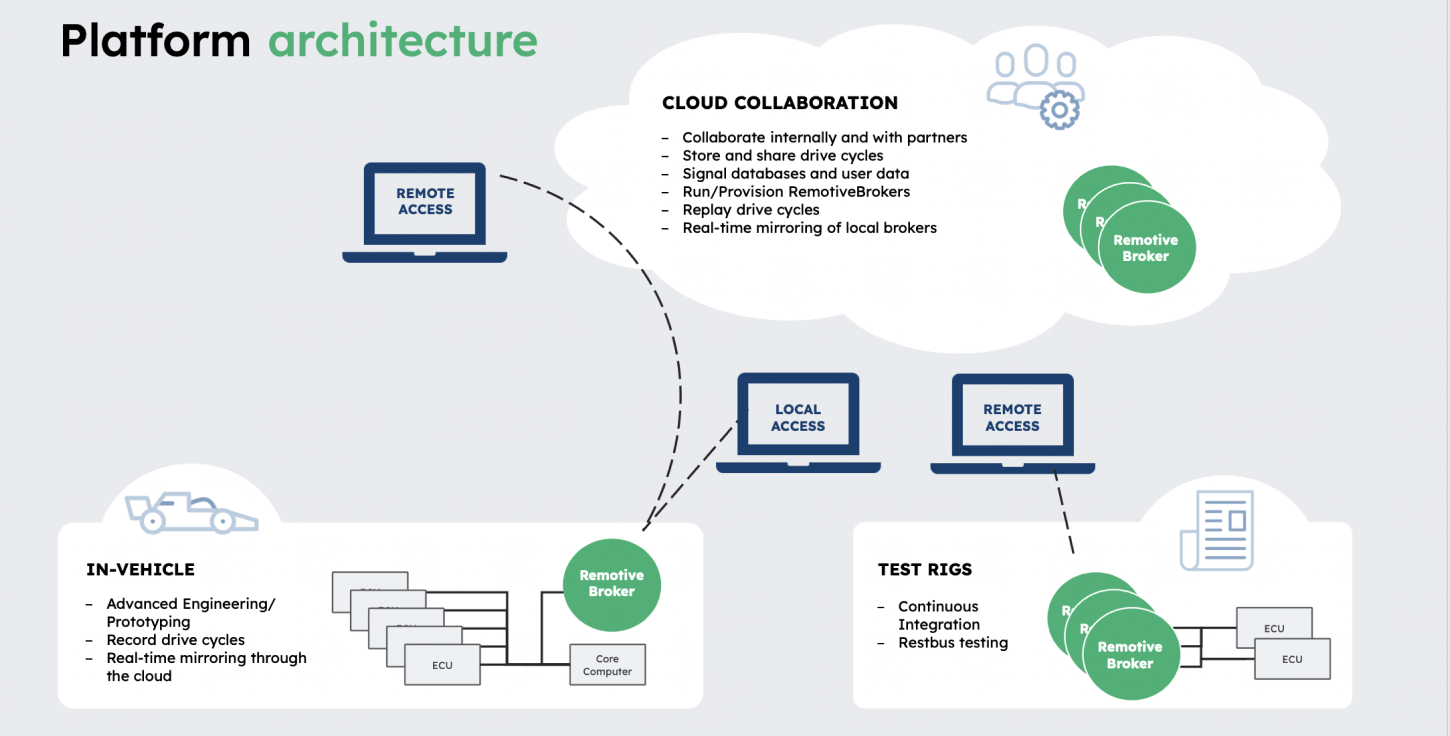
As it lets you run scenarios and test your iterations with real vehicle data in remote settings, it removes the need for hardware. Simulated testing also makes the overall process less expensive and more efficient.
2. Enabling access to signal data
Access to signal data is crucial to creating realistic prototypes, as well as enabling early testing and iteration of ideas. Using actual signal data from recordings and in real-time, RemotiveLabs’s platform makes a huge difference in putting prototyping to valuable testing in the automotive industry. RemotiveLabs also makes it easier to share signal data in the cloud internally and externally, following the common approach VSS (Vehicle Signal Specification by COVESA).
3. Freedom of choice in programming languages
The RemotiveLabs platform enables freedom of choice for programming languages and workflows, including open-source and flexible processes. Allowing developers to use the development approach and tooling processes of their choice adds fewer constraints to their work, making them more agile and productive.
4. Flexible collaboration
With cloud storage and collaboration features, RemotiveLabs helps developers easily incorporate their data into decision-making.
In general, what RemotiveLabs does is reduce complexity and enable quick feedback and interaction with vehicle data. How it brings value and empowers users is best exemplified with visuals.
Visualizing prototype work is what ProtoPie does best. By bringing together the core values of ProtoPie and RemotiveLabs, the company was able to make automotive UX prototyping more fun, efficient, and relevant.
But they faced some hurdles to get there.
Challenges faced by RemotiveLabs before ProtoPie
The key building block of the RemotiveLabs platform is the RemotiveBroker, that functions as a “broker” between two pieces of hardware.

RemotiveBroker allows users to connect to the signals in the car. This makes signal data available and easily shareable for automotive developers, including UX designers.
Signal data is helpful for all types of development work, including debugging, verifying compatibility between ECUs (Electronic Control Units), early-stage innovation, and continuous integration purposes.
RemotiveLabs enables automakers to increase both quality and speed in their software-first ambitions. But in the process, they discovered that automotive prototyping is, much like software development, hindered by:
- Traditional processes
- Outdated tooling
- Hardware-centric approaches
To mitigate this, RemotiveLabs enables automotive development without physical access to the electromechanical parts. Testing can take place either live in a real car, or in the cloud using a video recording for simulation.
But what they were missing was the ability to demonstrate just how much faster and relevant prototyping with their platform is. That is what brought them to ProtoPie and ProtoPie Connect.
Why RemotiveLabs started using ProtoPie
As a key part of their process, RemotiveLabs enables software developers to use clever open-source solutions and third-party hardware for visualization, modeling, and simulation.
As all developers know, the best way to innovate is to experience things right away. On that note RemotiveLabs knew that the value their RemotiveBroker bring with real vehicle data is best experienced with visual tools. This can to some extent be done with open-source solutions. However; since ProtoPie is such a powerful and appreciated tool,the combination is a very powerful way to demonstrate the value for automotive development.
For designers and engineers who are prototyping things for the automotive industry, using ProtoPie Connect in combination with RemotiveLabs will enable a faster and, in essence, more fun process. This is because the work can be carried out by developing and experiencing the prototype with real data from the vehicle.

RemotiveLabs used a ProtoPie instrument cluster to demo the recording of a driving cycle and to show how the signals can be made available in the cloud.
Check out the cloud demo here, or see the example below for a specific example of how RemotiveLabs has used ProtoPie in their workflow.
Why automotive developers will benefit from using RemotiveLabs in combination with ProtoPie
The overall industry trend is moving toward left-shifting, i.e., the practice of moving testing and QA to earlier stages of the development life cycle.
Since automotive systems are very complex, it goes without saying that designing them takes a lot of time and resources. Just one single automotive design project can take years to complete.
Especially in recent years, which have seen moves toward integrated software and hardware in automotive UX. Just think of the growing real estate of screens in design.
And by creating prototypes that look like the real thing from the start, you can avoid misunderstandings and costly iterations that steal your time in the development process.
ProtoPie and RemotiveLabs are both tools that enable left-shifting by helping those who want to get quick feedback on their code and see their prototypes come to life.
With signal access, it is also easier for automotive OEMs to collaborate internally as well as with startups and partners.
Using the RemotiveLabs development platform in combination with ProtoPie Connect makes any UX testing more relevant early on since the prototype can use real data from the vehicle.

Automotive UX example: Automotive Instrument Cluster Prototype
To illustrate how helpful it is to use the RemotiveLabs platform with ProtoPie Connect, the company used a recording of a drive cycle with a Tesla and matched it with a ProtoPie instrument cluster.
- Record a drive cycle using RemotiveBroker, giving access to real signals from the car.
In the image, you can see the RemotiveBroker. The user can plug in the broker using any Linux/docker-based hardware including Raspberry Pi. All you need is a valid license, which can be requested at the remotiveLabs User Guide on GitHub.
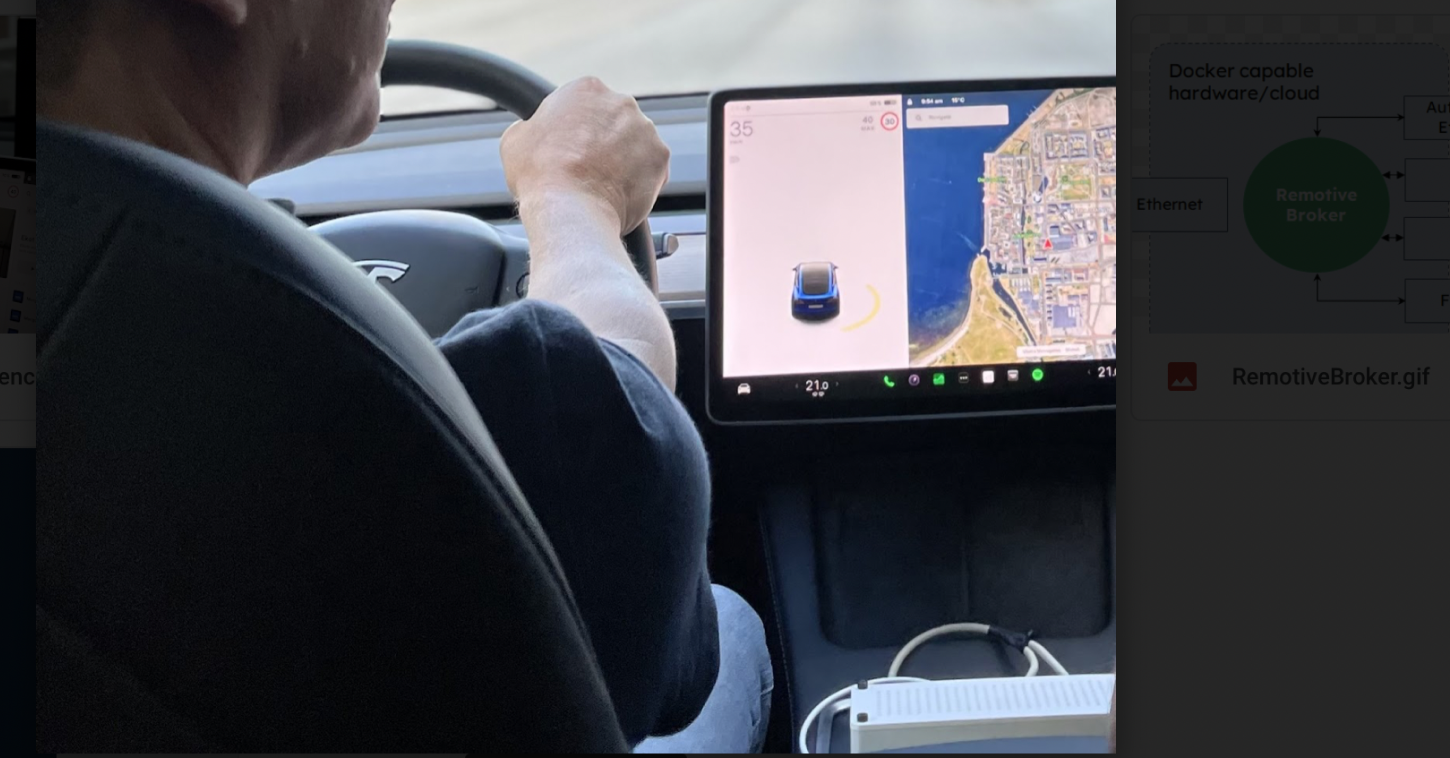
2. Prototype the instrument cluster using ProtoPie Connect.
Match it with the actual signals from the vehicle in the RemotiveLabs platform. The image shows how they tested the cluster with a driving cycle recording.
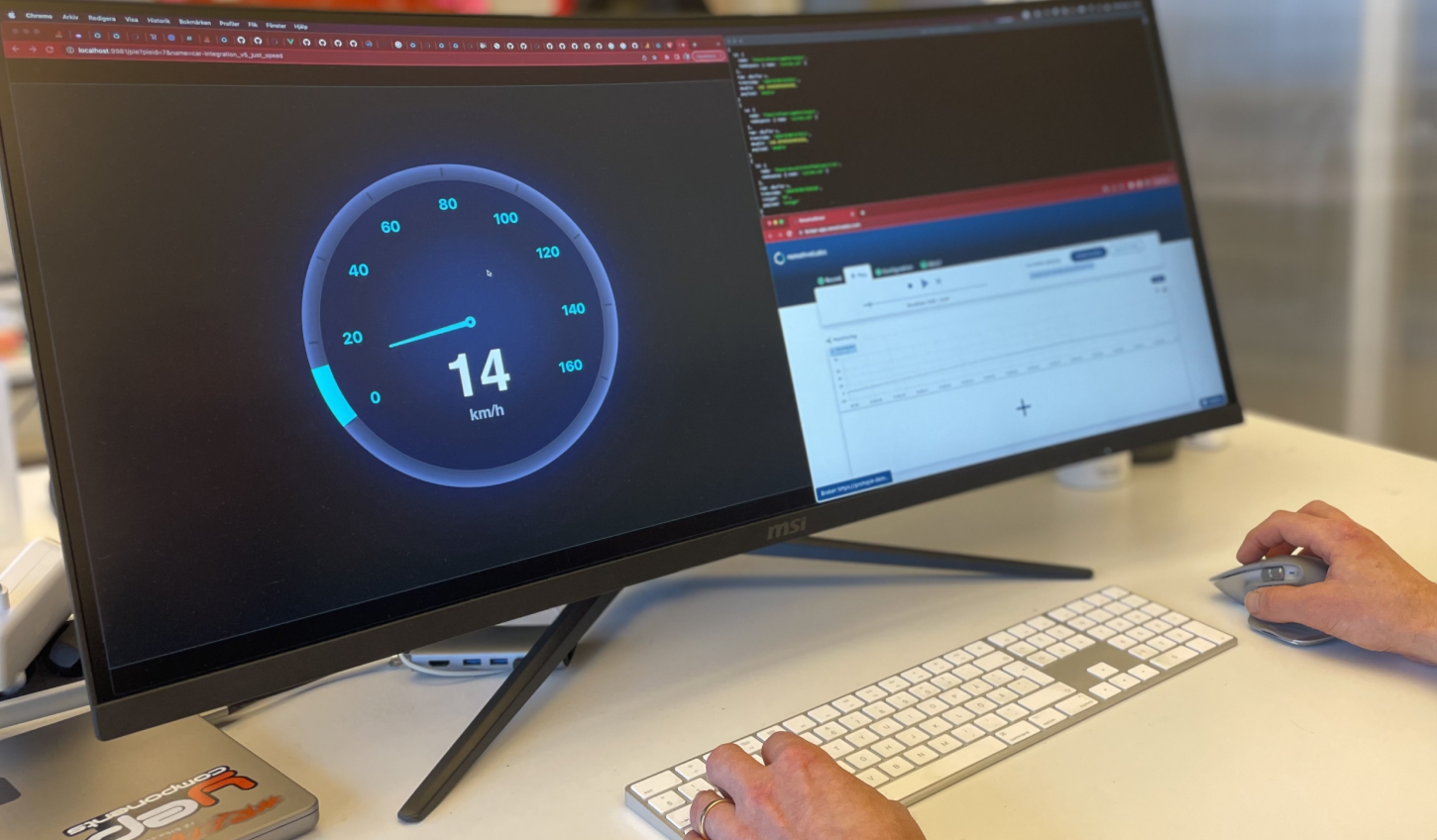
3. Experience it live!
The RemotiveBroker acts as an enabler for ProtoPie to receive vehicle signals in real-time. See the screenshot showing a recording of the live instrument cluster. Easy as 1,2,3!

Less development time, better automotive prototypes
Using ProtoPie with RemotiveLabs makes automotive software development both efficient and enjoyable. Book a demo now to find out how!
Check the article made by Remotivelabs here.
